Blood, Flowers, and Pool Parties
S. Prasad
What are the primary features of the present wave of global uprisings? How do communist experiments, tactical innovations, and political intelligence circulate between these revolts, and what common limits do they confront? What predictions are possible, given what we saw this past year? Taking the movements of 2022 as a point of departure, S. Prasad sketches a balance sheet of revolutionary struggle in our historical moment.
Other languages: Polski, Italiano
To you, the bold searchers, researchers, and whoever embarks with cunning sails on terrible seas — to you, drunk with riddles, glad of twilight, whose souls are allured by flutes to every treacherous gulf, because you do not want to grope along a thread with cowardly hand; and where you can divine, you hate to calculate — to you alone I tell the riddle that I saw. —Friedrich Nietzsche
Throughout 2022 there were uprisings, riots, and mass protests on nearly every continent, triggered by the rising cost of living and the stupidity of those who govern. Despite the reigning confusion, we remain in an era of revolutions.
On New Year's Day, the rising cost of living and the end of fuel subsidies sparked protests in Kazakhstan. Within a week, an insurrection broke out in Almaty, the country’s largest city, where demonstrators successfully stormed or burned many government buildings, temporarily defeating the police and security forces. The armies of six nations coordinated to quell the uprising.
In Sri Lanka, protesters stormed and occupied the halls of power and temporarily chased the president out of the country. The homes of more than forty politicians were burned to the ground. Images of the clashes spread around the world, followed by footage of proletarian pool parties in the presidential palace. A similar scene unfolded in Iraq when protesters in Baghdad stormed and occupied parliament.
Clouds of tear gas and smoke from flaming barricades filled the air in Jakarta. Protests in Haiti following the end of fuel subsidies left Port-Au-Prince in a condition some have described as “low-intensity civil war.” The government of Chad has referred to demonstrations against its military rule as an “armed insurrection.” Violent repression has left nearly a hundred dead. The West Bank in Palestine has been shaken for weeks by riots.
The New York Times warns that this could be the beginning of a long winter of discontent in Europe. In October, nearly every oil refinery in France went on strike. Tens of thousands entered the streets to protest the rising cost of living, as the threat of a general strike loomed large. Strikes have begun to spread to England as well.
China has witnessed what may be its most widespread protest movement since 1989, when tanks were sent to repress demonstrators at Tiananmen Square. In a Foxconn iPhone factory in central China, thousands of workers clashed with riot police and tore down barricades. In the southern city of Guangzhou, protesters broke out of locked-down buildings to confront health workers and ransack food provisions. Actions spread to Xinjiang province, Shanghai, and Beijing. Some demonstrators sang the Internationale — “to create mankind’s happiness, we must rely upon ourselves” — while others carried flowers and blank sheets of paper.
As we write, the uprising in Iran is well into its fourth month. It is the most widespread, intense, and long-lasting protest movement to hit the country since the 1979 revolution, and the first to be centered not merely on achieving reforms but on the end of the regime. Police stations, government buildings, banks, and even military bases have been set on fire. The unrest has spread to prisons and inspired strikes in the oil industry. After a riot erupted out in the infamous Elvin Prison, a fire broke out under mysterious circumstances. Some cities have been briefly liberated, while others have experienced horrific massacres. After video of a police officer being beaten to death there went viral, a military-style raid of an apartment complex in Tehran recalled scenes from the recent film Athena.And still crowds of young people continue to take to the streets every night chanting “women, life, freedom,” “death to the dictator,” “the year of blood.”
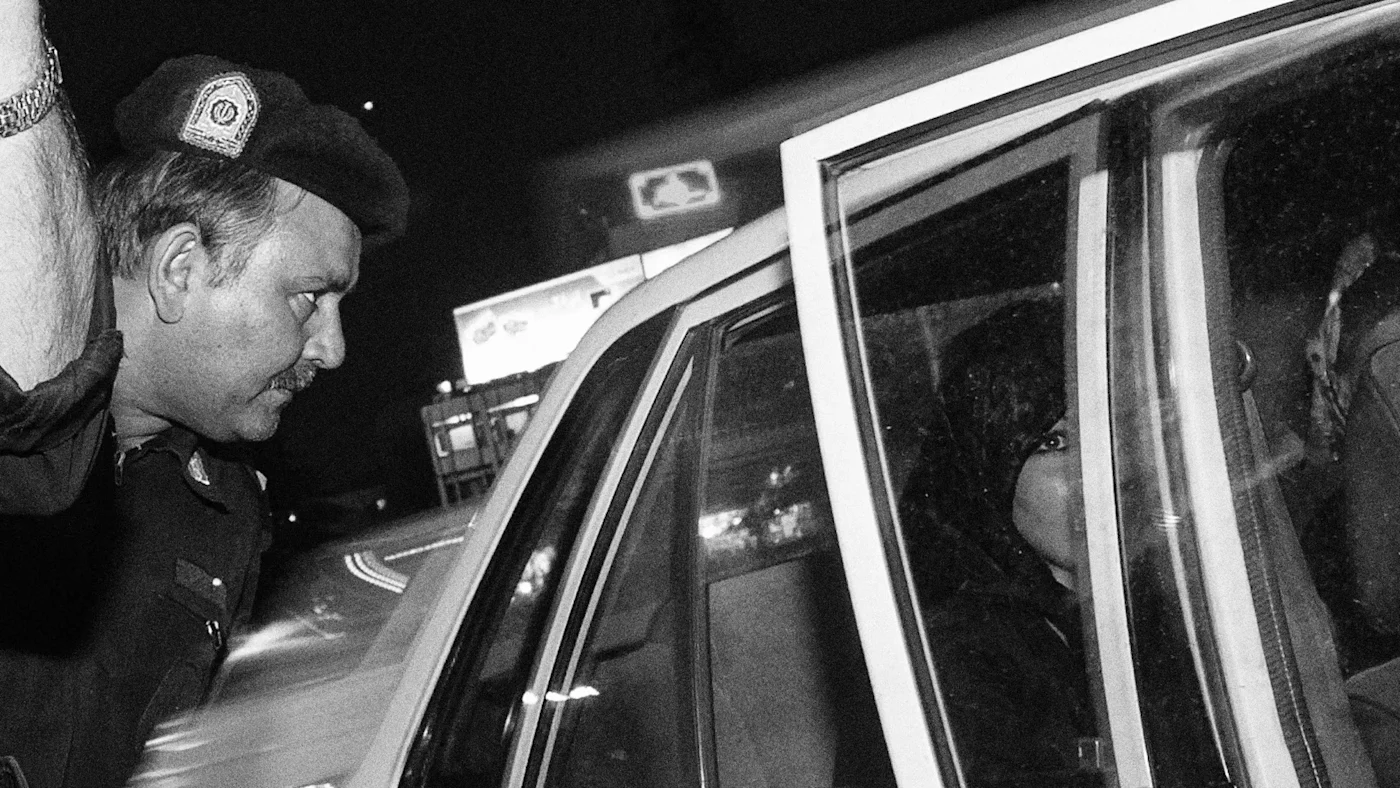
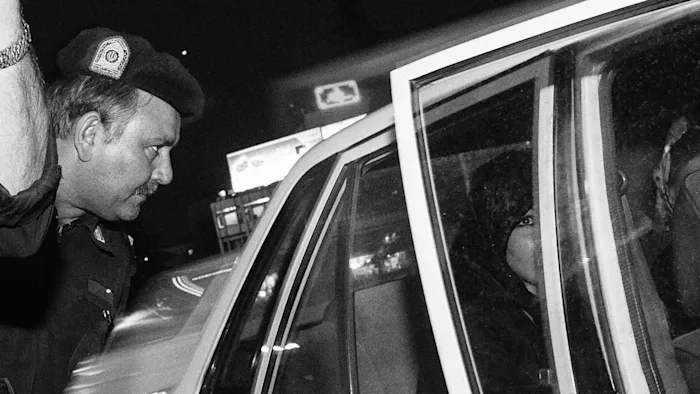
There is no way to know whether this rising tide has already hit its high-water mark and begun to recede. The magnitude and intensity of these movements may indicate that we are on the cusp of a wave of struggle that will soon wash over the globe. What is even more uncertain is whether these new movements will be able to navigate the reefs on which the revolutions of our century have so consistently been shipwrecked.
America tends to be in sync with these global rhythms, although often with a bit of a delay. It may then be reasonable to wager that in the coming years we will see another mass struggle in the United States. What does this mean for those of us still watching the tide come in? How might we orient ourselves to this coming wave and prepare for it to reach our shores? Will we be ready to storm the heavens when our time comes again?
In what follows, let us attempt to describe what gives consistency to these struggles kicking off around the globe, and use that as the basis to make tentative predictions. What then are the primary features of this wave of struggles?
Turbulence
2022 was a year of global turbulence. The pandemic, spiking inflation, breakdowns in the supply chain, and the war in Eastern Europe combined to create a combustible situation. Conditions are both increasingly volatile and increasingly similar across different countries. This generates a context in which struggles are likely to emerge and, when they do, to spread quickly. In such an environment, a small spark can start a prairie fire.
The uprisings this year have tended to occur in locations where the rising cost of living has made conditions explosive. But every explosion requires a trigger, and the latter may not be directly linked to the economic situation itself. As it happens, the catalyst is often the activity of the state: imposing austerity, refusing to hold elections, a death in police custody, etc. The government does something and people feel compelled to respond, giving focus to their commonly felt frustration.
Once they gain momentum, these protests go beyond their initial demands, whatever particular thing set them in motion. They become a struggle for the fall of the regime itself. The economic turbulence becomes a backdrop for a fight against the state. This explains both the revolutionary charge these protest movements have, but also their hesitations and half-measures.
But what sparks these protests, what they oppose about the regime, is its excesses: what makes it corrupt, irrational, arbitrary, incompetent, stupid. For this reason, the movements continue to speak in a language of liberalism, often describing themselves in terms of human rights, identity, and democracy. It is unclear then whether such movements can be expected to overturn the world, or whether they in fact aim to preserve it.
Generalization
Struggles are becoming both more extensive and more intense. In the words of a journalist, “[in the early 2020s] mass protests became more common, faster to rise, and larger in size worldwide.” This is most evident in countries like Iran that have experienced wave after wave of struggles in recent years. In 2009, Iran’s Green Movement against what was widely seen as a fraudulent election was largely led by the urban middle classes and college students. In the decade since, the country’s protests have grown more widespread, while attracting larger numbers of proletarians. Inflation and a weak economy triggered protests in dozens of cities in 2017 and 2018, followed in 2019 by a week of intense rioting in response to an abrupt increase in the price of fuel. People in the streets in these years tended to be lower income, and thus more immediately affected by the economic turbulence:
For the first time since the founding of the Iranian Republic, the current uprising has united rich Iranians descending from high-rise apartments in northern Tehran with struggling bazaar vendors in its working-class south, and Kurds, Turks and other ethnic minorities with members of the Fars majority. The sheer diversity of the protesters reflects the breadth of Iranians’ grievances.1
A similar pattern can be seen nearly everywhere. In the years that followed the 2008 economic crisis, “the class struggle remain[ed] that of the most eager and the worst off.”2 In the past, struggles were frozen because the crisis itself was frozen. States had been able, for a time, to manage the economic turbulence, to contain the crisis to some extent, so that its burden largely fell on specific segments of the population. By contrast, movements today seem to extend outward, pulling in much wider layers of society. Our turbulent present may finally force us out of the holding pattern that characterizes the current state of crisis and the struggles it generates. As crises become unmanageable and begin to generalize, as the rising cost of living begins to affect everyone, struggles too will continue to generalize and become unmanageable.
Separations
A key limit of contemporary struggles has been their inability to overcome the reigning separations in the societies from which they emerge. In 2011, participants in many movements imagined themselves as having already overcome these divisions — often by projecting a unity, such as “the 99%,” that did not find its basis in any particular or pre-existing identity.
But, as Endnotes put it, “the fact that the 2011 movements presented themselves as already unified, as already beyond the determinations of a horrible society, meant that their internal divisions were usually disavowed. Because they were disavowed, those divisions could only appear as threats to the movement.”3
By contrast, as struggles this year generalize, they seem to place greater emphasis on particular identities. Rather than thinking of themselves as beyond the determinations of this society, movements today tend to take pre-existing identities as a point of departure. The separations of our society are treated as a challenge, a problem to be solved. Unity is posed as something that will need to be constructed through the struggle itself.

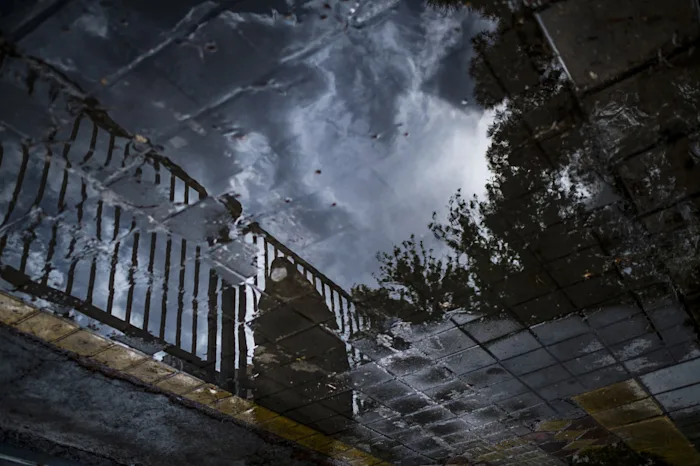
For example, the uprising in Iran was triggered by the death of a Kurdish woman in police custody. Although there are any number of reasons to fight against the regime, and people from all walks of life have joined the uprising, for the first time the struggles of women and ethnic minorities are foregrounded in how the uprising presents and thinks about itself. This fact has also been reflected in action, with women at the forefront of many actions, and some of the most intense protests taking place in regions where the Kurds or other ethnic minorities are a majority.
Of all the movements and uprisings of 2022, Sri Lanka is the one that most closely resembles the 2011 movement of the squares. In a country so recently riven by civil war, no one could take unity among the participants for granted. Overcoming the separations of Sri Lankan society — particularly between Sinhalese Buddhists, Tamil Hindus, and Muslims — was therefore understood as a necessary task. Protesters rightly regarded the suspension of these divisions a great accomplishment, and were keenly aware that the risk of their reemergence counted among the greatest threats facing them. This recognition was central to how the revolution thought of itself, and the debates that took place within it.
One never knows how long these fragile unities constructed in the course of these uprisings will hold. Nowhere have struggles overcome the limits that the 2011 uprisings hit. While they often manage to suspend the normal operations of this world, generally it is not for very long. But to get over the wall, we first have to get to the wall. It is only through grappling with these limits that they might become formalized, and thus posed as questions which movements can then attempt to answer.
Tactics
Waves of struggle often follow the spread of a particular set of tactics. The classic example of this was during the revolutionary phase of the old worker’s movement, when waves of mass strikes spread across Europe and elsewhere in 1905, 1912, and 1917.
This process often entails innovations, as new tactics emerge that seem to offer ways around old problems. These tactics are then reproduced and adapted across a number of different contexts. The two waves of the last decade seem to follow this pattern. There was the movement of squares in 2011 following the revolution in Egypt. Then in 2019 there was the proliferation of “frontliner tactics,” although in hindsight how much consistency these gave to the myriad events may have been exaggerated by observers.
That there is some tactical common ground within 2022’s tumultuous events is obvious. If the images that circulate from these uprisings could easily be mistaken for each other, this is because the scenes were nearly identical: the crowds, the tear gas, the soldiers and riot police, the clashes at flaming barricades, the arsons, the guns, the makeshift riot gear and improvised weaponry, even the occupation of buildings. Still, it is not enough to say that struggles this year tend to look like riots, for this does not allow us to grasp their specificity, i.e., what is innovative about them and thus might spread, and in doing so, what might allow them to overcome old limits.
It is notable that there is no particular innovation that forms the cutting edge of events in 2022. No leading tactic seems to give consistency to the multitude of protest movements and uprising taking place. While there have, of course, been innovations, none have been widely reproduced across contexts.
This should not be surprising. It seems reasonable to expect that, within a decades-long sequence of struggles, each new wave will have more internal variation than the previous one. Every struggle hits its limits and impasses; each time, there are experiments with how these might be overcome. As these experiments grow over time, each yielding different results, as they spread and resonate in different ways, the amount of variation will tend to increase.
This might also be indicative of how much struggles have generalized. As they become more widespread and more proletarian, struggles often start to shed many of the activist trappings that made the movements of 2011 and 2019 seem both dynamic and limited. After all, necessity is the mother of innovation. What made movements of those years seem innovative was, in hindsight, largely a reflection of their limited compositions.
In the case of Sri Lanka, certainly among the most intense revolts of 2022, the uprising followed a familiar pattern. The model and tactics were largely inherited (with certain variations) from the Arab Spring, particularly the revolution in Egypt. This was similarly true with the revolution in Sudan in 2019, during the previous wave, but was not the case in Algeria (also in 2019), where the tactics and rhythm more closely resembled the recent Gilets Jaunes movement in France. It is not clear then how much Egypt will continue to provide a template for revolution in our century, or whether this experience will soon be superseded.
Strikes
The geographic and temporal distance between riots and strikes is shrinking. The uprisings that broke out in the aftermath of the 2008 financial crisis were not accompanied or followed by any significant strike wave. Although disruptive tactics spread nearly everywhere around the globe, they remained in the squares and market places where they had emerged. Nowhere were they able to take leave for a time from this noisy sphere, where everything takes place on the surface and in view of everyone, in order to penetrate into the hidden abode of production where capital produces and is produced, on whose threshold is inscribed “No admittance except on business.” According to Theorie Communiste, this inability to penetrate the “glass floor” into the production process itself is “the recurrent limit of all the riots and ‘insurrections.’” In their view, the course of the revolution must take it “into the sphere of production,” not so as to conquer and lay claim to it, but in order to abolish it.
Do recent events tell us anything about what overcoming this limit might entail? Are cracks appearing in the glass floor beneath us?
More and more, strikes belong to the arsenal of tactics that uprisings deploy. Widespread riots are often followed by waves of strikes of at least some significance. As the rhythm between these moments grows tighter, it invites the idea of a certain consistency between these two poles, or perhaps even the dissolution of the barriers dividing them.
2020’s wave of riots in American cities was followed by a rising tide of strikes, reaching its peak in the autumn of the following year. A number of these strikes occurred in cities which had experienced some of the most sustained unrest the year prior, such as Louisville, Lancaster, and New York. Even major sports were affected: shortly after the violent anti-climax in Kenosha, WI, a mass strike spread through nearly every sports team in nearly every major league.
Although certain union campaigns (e.g. Amazon) employed the language of Black Lives Matter, the strikes of 2021 rarely made any explicit connection to the riots of 2020. Yet both clearly emerged out of, and responded to, a similar set of explosion conditions and a newly-combative mood of the American proletariat. Similarly, the riots and near-insurrection in Kazakhstan in early 2022 were followed by a wave of labor unrest. In this case, the strikes and the riot took place within the same month, rather than being separated by almost a year, and there was a much more explicit connection between the two. However, neither in Kazakhstan nor in America did the strike wave build nearly as much momentum or cause anywhere close to the amount of disruption to the economy or society that the riots had.
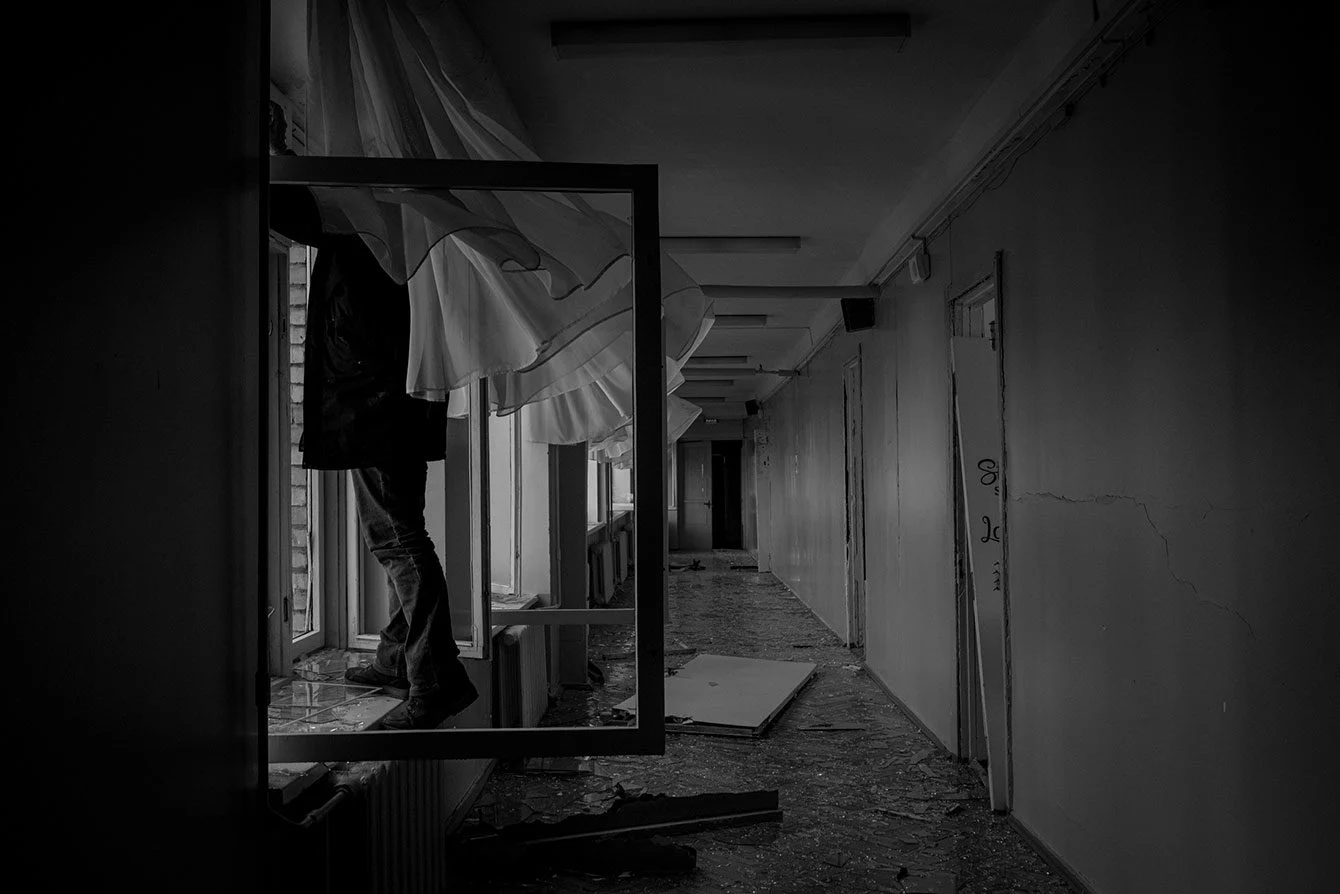
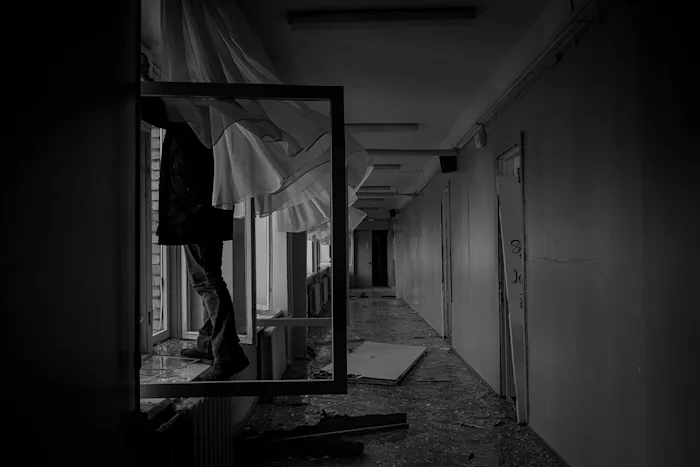
In Sudan and Myanmar, general strikes have become a key tactic in the fight against recent military coups. The strikes there have been effective in illustrating the broad sympathy the movements can mobilize, but not in exerting any real leverage. Strikes, in this sense, can sustain the momentum of the uprising, holding open the space of disruption from which something new might emerge, but they do not fundamentally alter its dynamic. It could be said then that the general strike is part of the rearguard of the movement rather than a leap forward.
More recently, the uprising in Iran has spread to workers in the oil industry, a case in which workers have some real leverage over the state and the economy. Strikes there have expressed solidarity with the protest movement, while also putting forward their own demands. It is not clear yet how determined these strikes will become, how far they will spread, or whether they will inspire similar activity in other industries.
The strikes of oil refinery workers in France and the looming winter of discontent that could spread across Europe may pose the same question, only starting from the reverse premises: might it be easier to shatter the glass floor from below, to kick down the door to the abode of production from within? Could a struggle that begins as a strike wave eventually spread out across the rest of society, becoming a general movement of refusal to the rising cost of living? The experience in Italy in the years following the Hot Autumn of 1969 might give us one way to imagine this sequence, although under somewhat different conditions.
Cartography
Regardless of the country we consider, the cartography of struggle appears to obey a fixed pattern. Nationwide uprisings begin in the periphery, before circulating throughout the country and arriving finally at the largest city or capital. The latter then becomes the center of gravity for the uprising, setting the tone and rhythm for the rest of the country; it is often where the most intense experiences and experiments occur.
In Kazakhstan, protests first emerged in the fuel-producing region of the west, before spreading across the country over the following week, climaxing with riots in Almaty, the former capital and largest city. Protests of farmers and fishermen in rural Sri Lanka were followed by demonstrations and riots in the suburbs surrounding the capital, and then, finally, occupations and mass demonstrations in Colombo itself. The uprising in Iran began in the Kurdish areas in the west before spreading to the major cities, such as Tehran, and to Azeri, Arab, and Baluchi-majority areas as well. And as a recent New York Times article observed, in China “it was only after protests broke out in other cities — Urumqi on Friday night, Shanghai on Saturday — that mass mobilization seemed possible in Beijing, too.”
This shifting geography reflects a changing composition. Struggles often begin in a particular region with the demands of a particular social group. But as they spread outward, they tend to pull more layers of society in. In doing so, struggles either accumulate more demands, shed their demands entirely, or settle on the universal demand of our times: the fall of the regime.
At times, the spread of the struggle follows the path of the crisis: protests originate in the region and among the social groups most immediately impacted by the crisis, and as the latter generalizes, the uprising does as well. This was the case in Sri Lanka. But there is nothing automatic about this process. Often uprisings begin where there is a pre-existing legacy of struggle and organization, such as around Zhanaozen in Kazakhstan, where there is a recent history of riots and strikes.
Once protests are concentrated in the major cities, they often face a similar horizon and impasse. In Baghdad, Colombo, and Almaty protesters stormed and either occupied or arsoned major government buildings. But it turns out that neither capturing nor incinerating the halls of power is enough either to seize or destitute power. This confusion may have less to do with the geographic orientation of the struggle and more to do with their political orientation, the fact that the economic crisis becomes the backdrop for a confrontation with the state.
Even struggles that are practically oriented more towards infrastructure than institutions face a similar dilemma. In Haiti, for instance, protesters have blockaded the main industrial port for months, preventing the distribution of fuel and other key commodities. Despite the presence of calls for revolution, this infrastructural blockade seems intended to force the state into a negotiation around their demands.
Commune
Communism is the abolition of the state and the suppression of the economy. If we can speak of communism in the present tense, it is because communism exists as a potential within capitalist society. That is to say, communism exists as a task to prepare for and as a tension present in today’s struggles.
The communist potential within this sequence of struggles might best be described as a tension towards the commune. There are two primary ways the tension can be felt in struggles today; the commune emerges when these moments overlap.
First, there is the way space is occupied by struggles. Occupations and encampments become festivals and spaces to experiment with forms of living not mediated by money or divided by the reigning separations of our society. This effort to nourish and care for one another outside of the cash nexus and without reference to pre-existing identities has been described as “movement communism.”4 This is most apparent this year in the occupation movement in Sri Lanka.
Second, there is the way space is opened, however briefly, by riots and insurrections. On the night of January 6, 2022, as the wave of riots in Kazakhstan reached its peak, the police and security forces in Almaty, the country’s largest city, were defeated. Some fled the city, some defected, others simply stood down. That night power was suddenly in the hands of the proletarian insurgents. In the end, it required a six nation army to retake the city.
Oshnavieh, a town in the predominantly Kurdish region of northwest Iran, reportedly fell into the hands of protests while the region was in the midst of a general strike. Security forces and government officials either fled or took refuge in a Revolutionary Guards base. Government offices, banks, and a Revolutionary Guards base were set ablaze. A government-sponsored news agency blamed the situation on five hundred armed demonstrators, but videos of the events show thousands of protesters in the streets.

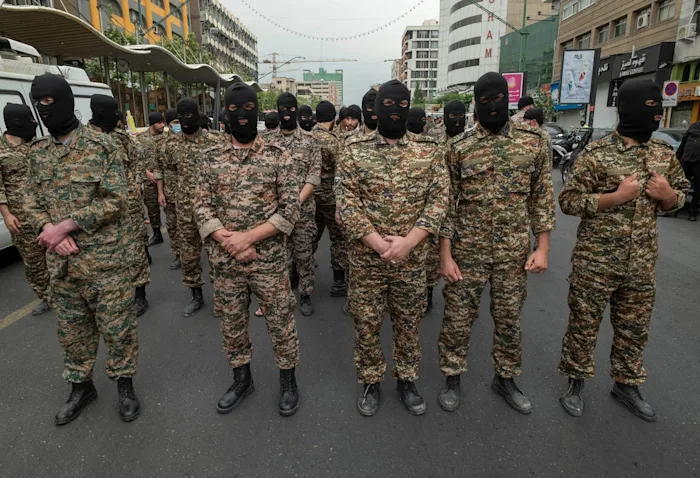
The passage from riot to insurrection occurs when the police and armed forces have been defeated. We catch glimpses of this when territories of a certain scale, for instance a city, are briefly liberated from the party of order during an uprising. But nowhere in recent cycles have these free cities existed long enough to conduct sustained experiments. These brief examples recall moments in the Syrian revolution when revolutionary councils came to power in certain cities, such as Manbij, as the state withdrew.
It is possible that somewhere, during this wave or the next, police will be defeated and insurgents will manage to hold a city, either by accident or intention, for more than a night or a few days. Any territory liberated in that manner would need to spread quickly in order for it not to be suffocated. The commune can only exist in one city for so long. Still, since struggles often unfold in a combined and uneven manner, at both a national and global level, whatever might happen within that city during the span of time in which it is liberated would undoubtedly influence the course of events everywhere else.
This raises a number of questions which are worth interrogating, while we still have the leisure to do so. What might happen to a city which, due to the uneven pace of struggle, finds itself temporarily liberated and possibly isolated? How might such a city be defended? How might its residents continue to feed themselves and ensure access to running water, electricity, and other utilities? What communist measures are possible on the scale of a single city? How these questions are answered will influence the course of struggles elsewhere.
Circulation
At the height of a wave of struggle, tactics and ideas that spring up anywhere can quickly spread nearly everywhere. However, the circulation of tactics, ideas, and influence tends to happen more frequently and with greater intensity within regional whirlpools.
The uprising in Kazakhstan finds its most immediate referents in the other recent uprisings in the former Soviet Republics. Revolutions and struggles in the Middle East and North Africa tend to occur in rapid succession, drawing momentum from each other. A similar cartography of struggles could be charted in the Balkans. In each case, protest movements pay most careful attention to others in their particular region, drawing on their experience for lessons and a tactical repertoire.
But this resonance isn’t exclusively, or even primarily, due to geographic or cultural proximity, but rather to shared political and economic conditions. The International Monetary Fund (IMF) warned that the revolution in Sri Lanka would be followed by unrest through South Asia, where a number of countries face similar sovereign debt crises. Many former Soviet Republics share mutual security pacts and are, to an extent, economically integrated with each other. But they also share similar economic and political systems. Unrest in any particular country in the region contains the potential to affect every other one, and tactics that seem effective in one country are likely to spread to the others.
It is precisely because struggles spread in this manner that they become a threat to the reigning order. The revolution in Sri Lanka, in part, aimed to sweep aside a corrupt and incompetent regime in favor of one more adept at managing the crisis. On its own, this does not necessarily contradict the interests and ambitions of the IMF. But as unrest spills over into the surrounding region, to Pakistan, Bangladesh, Nepal, possibly India, it threatens to destabilize the order that the IMF wishes to preserve. Similarly, what is at stake in any particular uprising in any former Soviet country is the possibility of the spread of unrest to Russia itself. This, in part, is at the root of the invasion of Ukraine.
At the center of these regional whirlpools is often a country whose size, economic strength, political stability, and military power has afforded it a degree of stability. This allows it to exert a counterrevolutionary pressure on the surrounding region and elsewhere. These countries include Saudi Arabia, Russia, China, and India. It is not that previous waves of struggle have not washed upon their shores, but they are yet to be truly engulfed by them. The extent to which struggles begin to traverse these and other regional powers is the extent to which revolutions elsewhere will be afforded some breathing room. This is the significance of the emerging anti-war movement in Russia.
The stakes, of course, vary across different regions. A slow rising tide of struggles preceded 2011 and 2019 waves. In both cases, it was after the outbreak of revolution in the Middle East that the rising tide became a tidal wave, with struggles spreading nearly everywhere in the world. There was Tunisia and Egypt in 2011, followed by Algeria and Sudan in 2019. This of course may be simply correlation rather than causation. It is easier to chart the significance that Egypt had on the events that followed it than Sudan. It may also be that conditions in the Middle East region are simply more ripe for revolution than elsewhere. It nonetheless seems clear that the fall of the Islamic state in Iran will resonate across the world in a more immediate way than the revolution in Sri Lanka.
Geopolitics
The 2011 revolution in Syria gave way to a civil war that became a proxy conflict between different regional and global powers. Different constellations of regional powers fund and arm different factions of the counterrevolution in Sudan. China and India compete for influence in Sri Lanka, while Russian troops have been involved in the suppression of three uprisings in the surrounding region over the last decade.
But as this sequence of struggles intensifies, we may begin to see this geopolitical logic unravel. Countries embroiled in unrest at home, or that have already been pulled into geopolitical conflicts abroad, may be less prone to intervene in situations elsewhere. For example, the invasion of Ukraine was, in part, a response to the near-insurrections that keep breaking out in countries surrounding Russia. However, as the war drags on, Russia has been less capable of exerting influence on the rest of the surrounding region.
To take another example, during the Syrian Civil War, Iran and Russia put their full weight behind the counterrevolution. Both countries today are being forced to focus their attention closer to home. Russia, for instance, has begun to withdraw soldiers and military equipment from Syria. As a result, an uprising in Syria or Central Asia today could face very different odds than it did in the recent past.
Another course is also possible: the intensification of struggles may lead to an intensification of inter-imperialist conflict. War, of course, is often how states respond to mounting domestic unrest. There are signs that Iran may be responding to the uprising at home by turning outward. “As protests rage at home, Iran’s theocratic government is flexing its military muscle abroad: Tehran has supplied drones to Russia that killed Ukrainian civilians, run drills in a border region with Azerbaijan and bombed Kurdish positions in Iraq.”5
We may see both an intensification of interstate conflict in some places, and more breathing room for proletarian struggle in others. In this respect, the extent to which struggles in places such as Iran happen to prevent, by accident or intent, their state from intervening in situations elsewhere is significant. If the uprising there instead leads to deeper geopolitical entanglements elsewhere, that might be a significant defeat for this cycle of struggles. On the other hand, a defeat that could lead to a deeper opening in the future. In any case, the task remains, as always, to transform the inter-imperialist war into global civil war.
Civil War
Mass uprisings are premised on the wager that a political rather than military defeat of the armed forces is possible. An insurrectionary situation becomes possible when the armed forces have, in the face of the crowd, either stood down or been divided. But what if that doesn’t happen?
The Revolutionary Guards in Iran have such a degree of economic power, political autonomy, and ideological influence that they have everything to lose if the system were to fall. It is unlikely, as a result, that the armed forces there will defect or stand down. Iran then is a test case of the extent to which a regime, quickly losing legitimacy, can withstand an uprising simply through its capacity for repression. (It is of course not quite that simple. The regime has not totally lost its legitimacy among some parts of the population.)
The right combination of repression and exhaustion might bring an end to the protests in Iran, as has happened with previous waves. Things there might already be winding down. On the other hand, it is possible that demonstrations will continue and that the repression will intensify, as the regime knows that it cannot back down. This will reinforce militaristic tendencies within the government, making it harder to open any space for compromise. Faced with this, protesters will have no other choice but to either go home or raise the conflict to a level that they cannot handle.
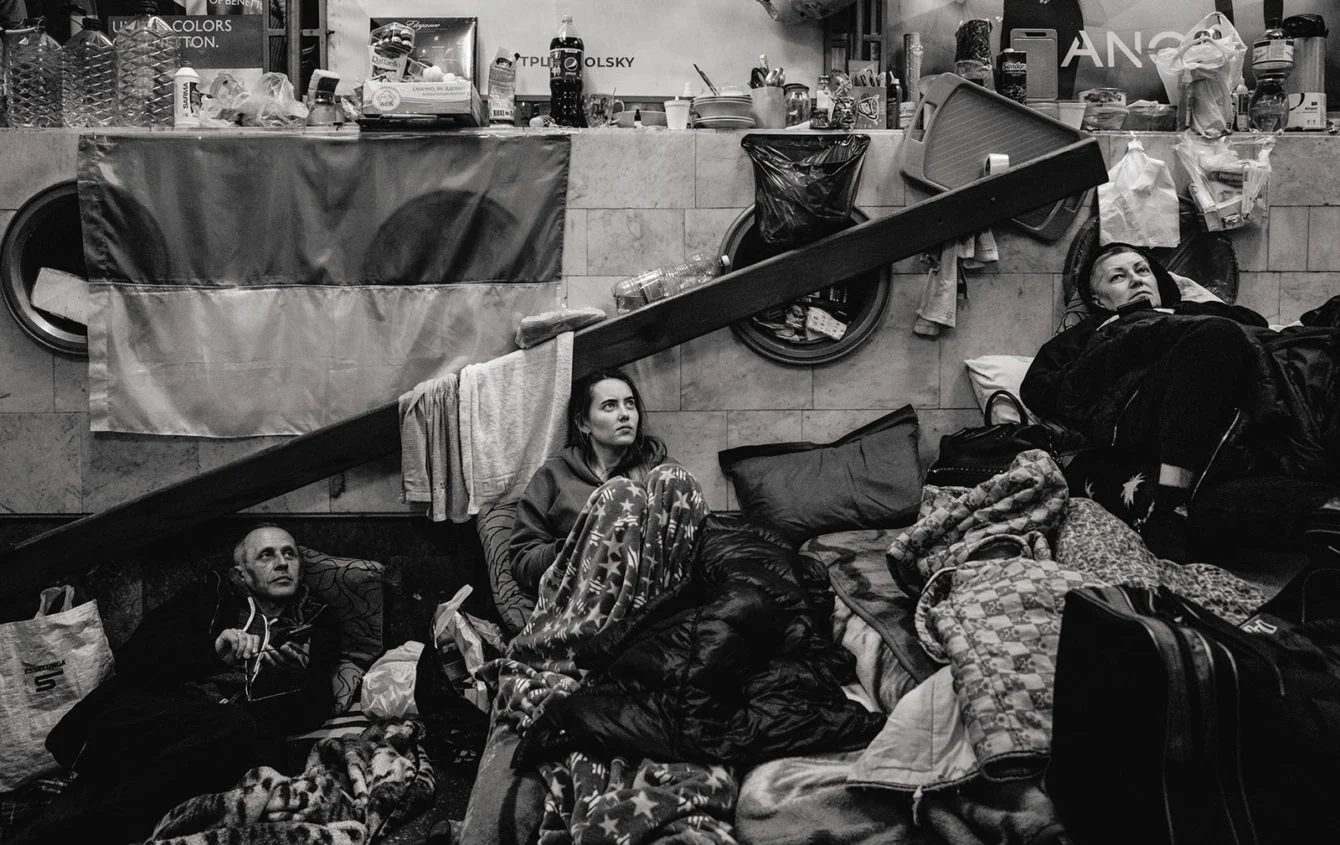
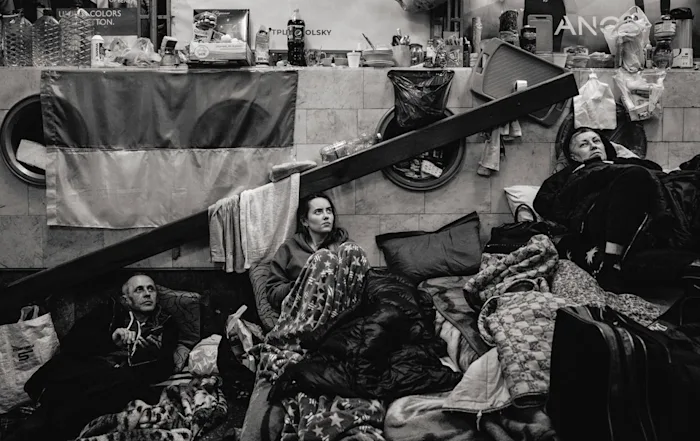
It is here that the specter of civil war emerges. The near apocalyptic violence of the counterrevolution in Syria serves as a warning to any possible future revolution. From now on, a regime, especially one with some international support, may always resort to this option when faced with popular unrest.
Similar to Iran, Sudan and Myanmar both face a situation in which the political defeat of the military may, for now, not be possible. In part, this is because of the army’s political and economic autonomy and distance from the civilian population in those countries. So far, the struggles in both countries have managed to avoid crossing the threshold into total war. Revolutionaries in Myanmar have fled the cities for the country, embarking on the path of protracted guerrilla war. Sudan has, for now, avoided the risk of armed conflict entirely through a sustained campaign of mass non-violent direct action. While both options have a certain dignity to them in the face of despair, for the time being neither seems to point towards a horizon in which any sort of victory is possible.
Collapse
The social revolutions of previous centuries took place in situations where the state and military actually collapsed, often the result of losing a war. As war returns to the European continent and wars between states proliferate, the collapse of the state in this manner may be on the table once again. However, the stakes today are quite different. If Clausewitz is right that all war tends towards total war, then from now on any war contains the possibility of the extinction of the human species.
But if the nature of war has changed in some essential way over the last century, so has the state itself. Governance today is much more embedded in everyday life and social reproduction than it was in 1917 or 1871. The collapse of the state is both harder to imagine and potentially more catastrophic.
The situation in Haiti today may offer us a glimpse of what the collapse of the state, in the context of escalating waves of struggles, might look like. The country has been in an increasingly unstable and tumultuous situation since the assassination of President Jovenel Moïse a year ago and the assumption of power by an interim government which is widely seen as illegitimate. In much of Port-Au-Prince, the capital, and the surrounding area, power on the ground is in the hands of gangs rather than the police. Escalating war between gangs over the control of territory has led to hundreds of deaths in a short period of time. Entire neighborhoods have been bulldozed. The country now also faces an outbreak of cholera. The end of government fuel subsidies unleashed another wave of protests, involving armed demonstrations, looting, and burning barricades. At times, the capital resembles a war zone: “The protests quickly broadened into a general, visceral rejection of Haiti’s dire living conditions, characterized by widespread hunger, a lack of basic services, omnipresent gang violence, runaway inflation and the weak rule of a caretaker prime minister, Ariel Henry.”6 An alliance of gangs has blockaded the country’s main port and fuel distribution center for nearly a month, demanding Henry’s resignation. But blockading everything, shutting down much of the country’s economy, cutting off the flow of fuel and food, has led to hospital closures, among other things. Hunger is spreading and fuel, water, and other basic supplies grow scarce in the midst of a cholera outbreak. The prime minister of the Bahamas has called Haiti a “failed state.” The Dominican Republic’s president has described this situation as “low intensity civil war.” It should be remembered though that Haiti’s neighbors are perhaps most concerned with having to deal with a possible refugee crisis. Haiti’s own government has called for armed foreign intervention to restore order. But licking its wounds from the failed adventures in Iraq and Afghanistan, and with its attention focused on the war in Ukraine and the protests in Iran, America is less likely to intervene than in the past. Without significant external support, not only will the interim government likely fall but the architecture of the state itself might collapse.
It is possible that the present situation could usher in a revolutionary situation. However, so far there is no Haitian Commune or Port-Au-Prince Soviet waiting in the wings to seize power. Instead, there is a federation of gangs, organized around a charismatic leader known as Barbeque, calling for “armed revolution.” These gangs have organized the blockade of fuel and coordinated the armed looting. But they are also accused of committing massacres and of having collaborated with the country’s business and police elites to suppress dissent. Their program for peace after the fall of the regime partly entails filling government positions with their own ranks.
Jacques Camatte once described our era as being defined by a “movement of racketization,” in which all forms of social organization, ranging from the state to revolutionary organizations, became merely gangs or “rackets.” History seems to be rushing all-too-faithfully to confirm Camatte’s hypothesis. In this context, the collapse of the state might simply entail the collapse of society, making some combination of foreign intervention and endless multi-polar civil war appear a much more likely outcome than anything that might be described as a social revolution.
Party
Revolutionaries do not make revolution. As Asef Bayat observes,
People may or may not have ideas about revolution for it to happen. For the outbreak of a revolution has little to do with any idea, and even less with a “theory,” of revolution. Revolutions “simply” happen. But having or not having ideas about revolution does have critical consequences for the outcome when it actually occurs.7
Arguably the most recent social revolution in history was in Iran in 1979. Widespread unrest brought down the state, a revolutionary dictatorship seized power, and workers councils appeared in factories for the last time.
When the revolution began, revolutionary ideas were already widespread and popular. There existed a dense constellation of revolutionaries and revolutionary organizations, ranging from communist to Islamist, each of whom had relatively clear perspectives on how they thought the revolution would unfold, what it ought to accomplish, and what their role within it was. But these organizations were not just armed with ideas. They were a material force capable of coordinating and intensifying struggles and preparing for the leap from riot to insurrection.
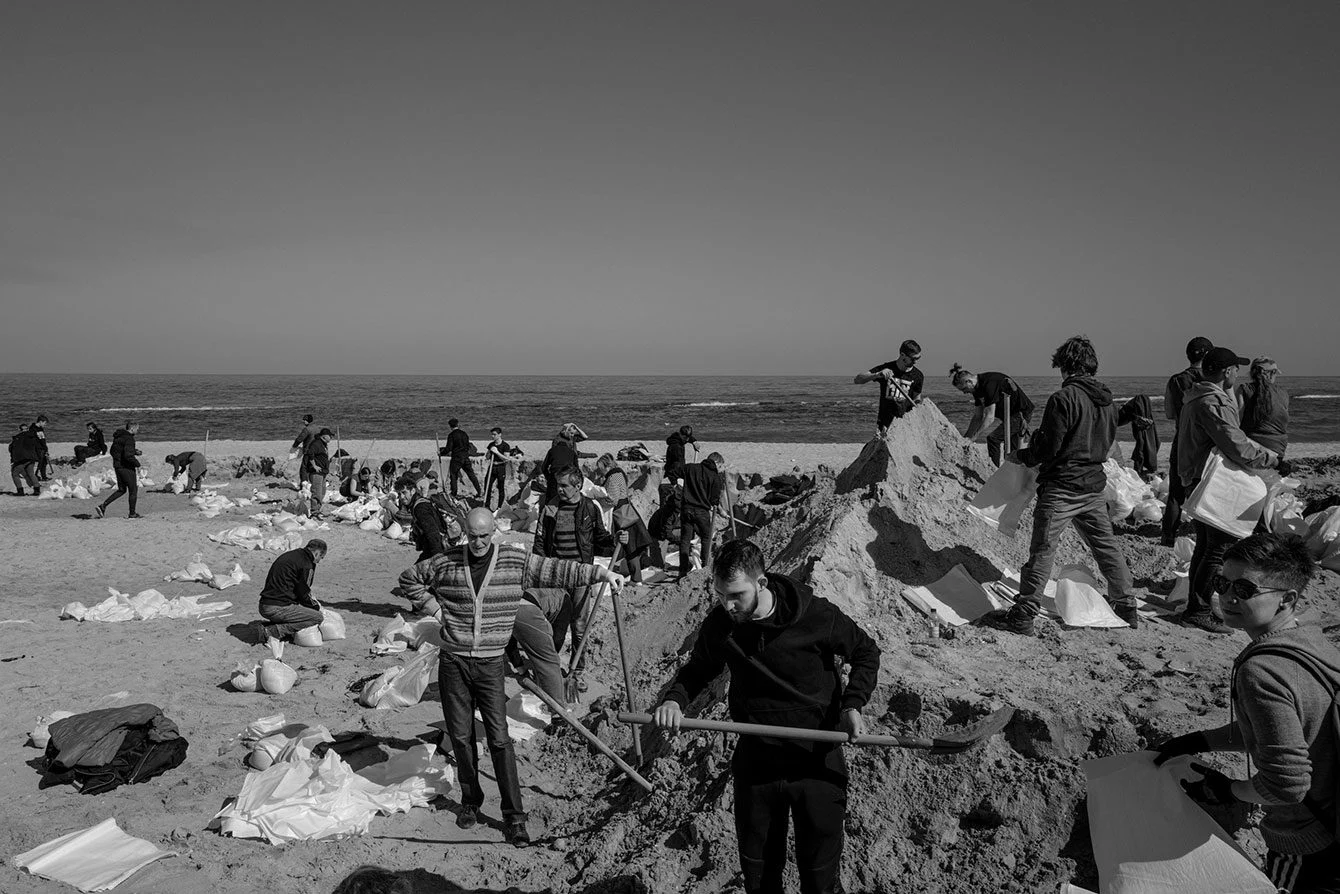
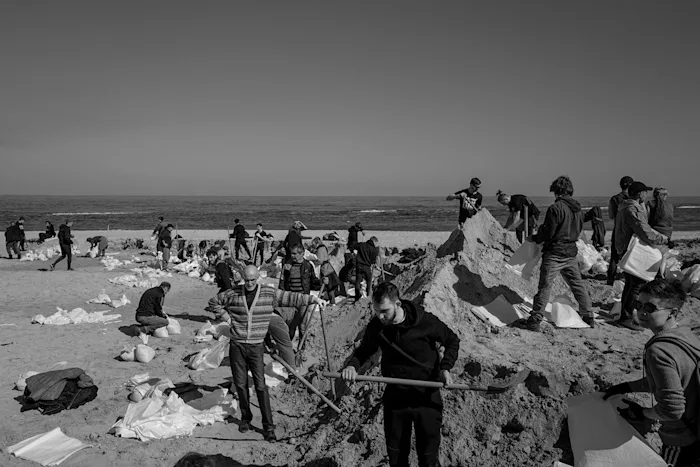
In this sense, the Iranian Revolution highlights the ambiguity of revolutionary organizations, which can act as both an accelerant and a brake on struggles. Revolutionary organizations contribute to pushing struggles towards their limits and theorizing those limits, and they can provide some manner of coordination, act as vectors of intensification, and offer the clarity of a shared perspective. But they can also simply get in the way, given that they also tend to embody all of the dead weight of the old world and its inertia. Often, they are simply waiting in the wings to seize power. In 1979, as so often in history, revolutionary organizations would quickly transform themselves into organized counterrevolutionary powers.
For better and worse, there is little in the manner of an organized revolutionary force in uprisings today. Nowhere are there ideas about the meaning of revolution or what kind of world it could create. For this reason, Bayat has characterized the turbulent events of our own century as “revolutions without revolutionaries.” Struggles in this context emerge spontaneously and quickly gather an immense momentum before reaching the limit of that spontaneity. “The protests transcend social sectarian boundaries, bringing together a much broader strata of Iranian society than we have seen in years,” said Ali Vaez, director of the International Crisis Group’s Iran Project.8 At the same time, he continues, “they suffer from the same shortcomings that the previous movements in Iran also suffered from. Primarily, the lack of leadership. [...] It’s very difficult to be able to maintain and sustain a movement that over the long run will bring the regime to its knees without coordination and leadership.”
As revolutions break out today, they take both their protagonists and antagonists by surprise. There is no shared sense about what to do or, rather, how to fill the space opened by the revolutionary situation. Faced with the immensity of its task, the revolution hesitates long enough for the old world to regain the initiative or, rather, to impose its inertia on everything. Over and over, the state is thrown down only to regain strength from the earth and rise again formidably. In these times of uncertainty, revolutions can only be made in half measure.
Revolutionaries are a product of their times, often emerging out of sequences of struggle. As each wave crashes, they leave behind new revolutionaries. These orphaned children, revolutionaries without revolution, attempt to draw lessons from their experience, clarify their ideas, get organized, and prepare for future struggles. It is understandable, then, that in a country such as Sri Lanka, which had not experienced a mass uprising in recent decades, the sudden outbreak of revolution would find itself without revolutionaries. However, in countries that have experienced wave after wave of struggles in recent years, it is unclear what role the revolutionaries that have likely emerged out of those waves have taken in current struggles.
In Iran, for instance, there are surely revolutionaries who were shaped by their experience of the uprisings in 2009 or 2019, but it is uncertain how they have organized themselves or intervened in contemporary events. Distance brings obscurity, and it is possible that the activity of revolutionaries in Iran is further obscured by the extent of state repression. Yet nowhere, even in countries with quite different conditions, does the production of revolutionaries seem to yield the capacity, ambition, and vision adequate to their task.
Our century is still young. Its struggles have been propelled forward by conditions that make it impossible for people to carry on living in ways they are accustomed to. Their uprisings have largely been attempts to preserve the world they once knew, rather than to overturn it. Everywhere people are fighting to sustain what they are within capitalist society; nowhere there is a positive vision or an alternative. Yet these struggles themselves erupt from and reflect the accelerating breakdown of the capitalist world. We will soon reach a point where no turning back is possible and these movements will need to come to a consciousness of their real conditions, whether they wish to or not.
Images: Nicole Tung, Morteza Nikoubazl
Notes
1. Vivian Yee and Farnaz Fassihi, “‘They Have Nothing to Lose’: Why Young Iranians Are Rising Up Once Again” New York Times, September 24th 2022. Online here. ↰
2. Endnotes Collective, “The Holding Pattern,” Endnotes Vol. 3, 2013. Online here.↰
3. Endnotes, “The Holding Pattern.”↰
4. Alain Badiou, The Rebirth of History, translated by Gregory Elliott, Verso, 2012, 111. ↰
5. Jon Gambrell, “Iran pushes militarily abroad amid unrest at home,” Associated Press, October 22nd 2022. Online here.↰
6. Milo Milfort, Anatoly Kurmanaev and Andre Paultre, “Fuel Hike Plunges Haiti Into Near Anarchy,” New York Times, Sept. 16, 2022. Online here.↰
7. Asef Bayat, Revolution without Revolutionaries: Making Sense of the Arab Spring, Stanford University Press, 2017.↰
8. Jomana Karadsheh and Tamara Qiblawi, “A barrier of fear has been broken in Iran. The regime may be at a point of no return,” CNN, October 5th 2022. Online here.↰